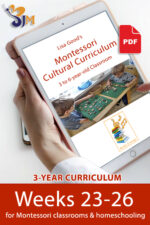Book choices for today:
Levers Anne Welsbacher
What is a Lever Lloyd Douglas
Get to Know Levers Karen Volpe
Levers Chris Oxlade
Pablo Picasso: Breaking All the Rules True Kelley
Pablo Picasso Ernest Lloyd Raboff
Science: (first circle)
Need for lesson – Lever samples and a lever to make.
Science 56
We want to talk about one of the six simple machines we learned about. Today we want to find out about the lever. A lever is a bar or rod that turns on a point known as the fulcrum. Force is applied to the lever to move an object or the load. Because there are three ways the fulcrum, force, and the load may be arranged about the lever there are three classes of levers. The component that is in the middle determines the kind of lever it is.
The first-class lever is the most common. In a first-class lever the fulcrum is always positioned in the middle, and the load and force are located at opposite ends. (provide a picture or sample of a first-class lever such as a see-saw)
In second-class lever the load is located in the middle and the force and fulcrum are located at opposite ends. The force and the load always move in the same direction. (provide a picture or sample of a second-class lever: wrench, nutcracker, or wheelbarrow)
The third-class lever locates the force in the middle and the fulcrum and load at opposite ends. The force and load always move in the same direction, but the force can never travel farther than the load. (provide a picture or sample of a third-class lever: fishing pole, crane, or backhoe)
Demonstrate lever model or make a lever.
Lever
Art: (second circle)
Need for lesson – Pictures of some of Picasso’s paintings, Picasso’s Art Card Set, and an art project for the artist Pablo Picasso.
Art 16
We are going to talk about another famous artist. His name Pablo Picasso. Picasso was born over 100 years ago in Spain. That country is on the red continent on our continent globe. He liked to paint with oil paints, draw, and sculpt. All the paintings by Pablo Picasso are usually classified into various ‘periods’ based on the moods and styles of the paintings.
The Blue Period – Many of the paintings in this period were in painted in the colors blue and shades of blue-green.
The Rose Period – Picasso’s paintings from this period were more cheerful looking as he often used orange and pink colors now.
The African Period – These paintings were inspired from African artifacts or things of Africa.
The Cubism Period – This style of Picasso’s paintings now had some brown colors to them and also Picasso would use collage in his paintings.He would add paper fragments of wallpaper or newspaper pieces and paste them to his paintings, so it looked like a collage painting.
Let’s look at some of his paintings and see if we can decide which period they were from.
Picasso Art Pictures
Picasso’s Art (MontessoriPrintShop.com)
Picasso Art Idea
Children can draw or paint Picasso self portraits or you can provide shapes, paints, and their own eyes, nose, etc. cut out of a photo for them to create a Picasso picture.
Picasso Lesson
Picasso Art
I asked my husband to draw an outline of two different faces (I saw this idea on the internet), and make various eyes, noses, mouths, and ears. The children glued on the pieces and then painted their pictures. This worked great for the younger ones.
Additional Works:
Water Color Picasso – This is a Picasso Picture that is from the book Masterpieces to Color.

Picasso Painting
Song (CD) choices for today:
Pablo Picasso Famous Artist
-
 (G) Weeks 23-26$25.00
(G) Weeks 23-26$25.00


